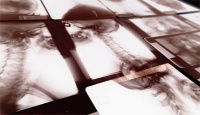Working flat out
A parallel-emission flat-panel X-ray system could improve the safety of medical imaging.

The X-ray tube has been the workhorse of medical imaging systems for nearly 100 years. In such a tube, a high-voltage potential is applied across a cathode and an anode, accelerating electrons towards the anode or metal target.
When the electrons collide with the target, they lose their energy and X-rays are emitted. Although effective, X-ray tubes have some limitations.
They are expensive to manufacture and replace, they are fragile and they burn out frequently. In addition, vacuum tubes require high-voltage electronic support systems to create and accelerate the electron beam, as well as associated shielding, which increases their capital cost and weight.

Vacuum-tube-based solutions are also heavy; even existing ’portable’ solutions can weigh 100kg or more. As a result, taking radiological equipment based on them to a patient can be impractical. As even portable systems emit a conical beam of X-rays, it is vital to keep a specificdistance from a patient to obtain an image and to avoid radiation over-exposure to the skin.
Register now to continue reading
Thanks for visiting The Engineer. You’ve now reached your monthly limit of premium content. Register for free to unlock unlimited access to all of our premium content, as well as the latest technology news, industry opinion and special reports.
Benefits of registering
-
In-depth insights and coverage of key emerging trends
-
Unrestricted access to special reports throughout the year
-
Daily technology news delivered straight to your inbox










Water Sector Talent Exodus Could Cripple The Sector
Maybe if things are essential for the running of a country and we want to pay a fair price we should be running these utilities on a not for profit...